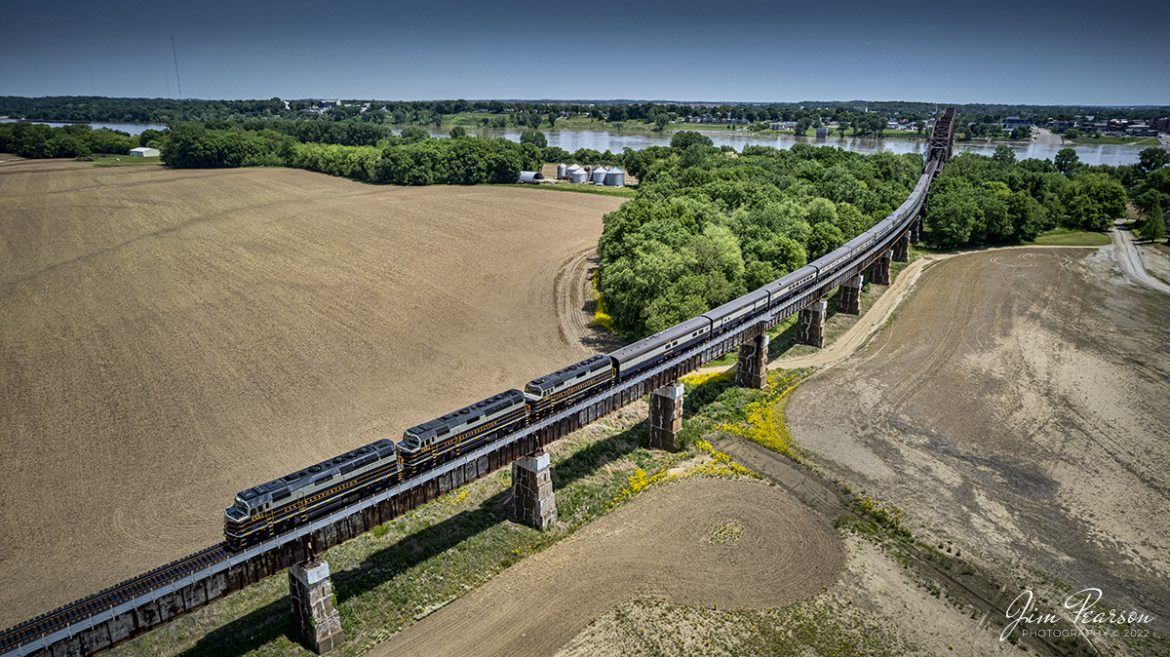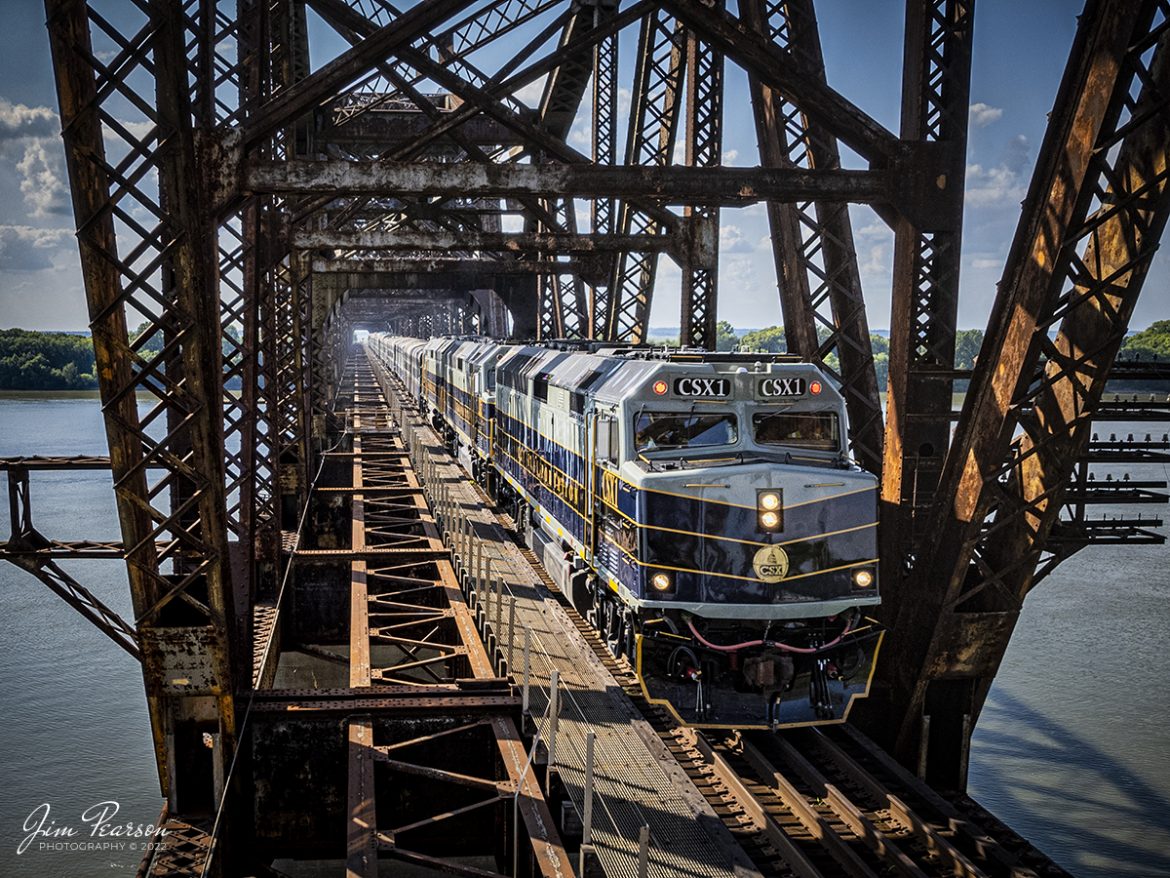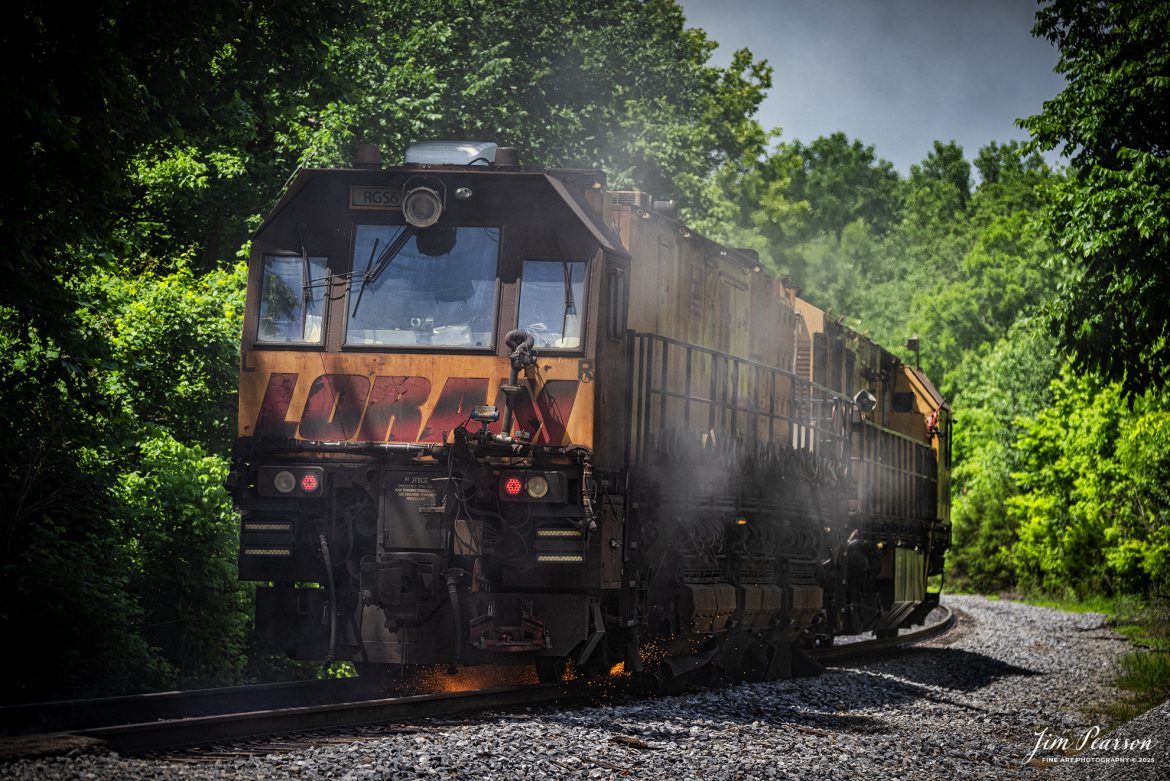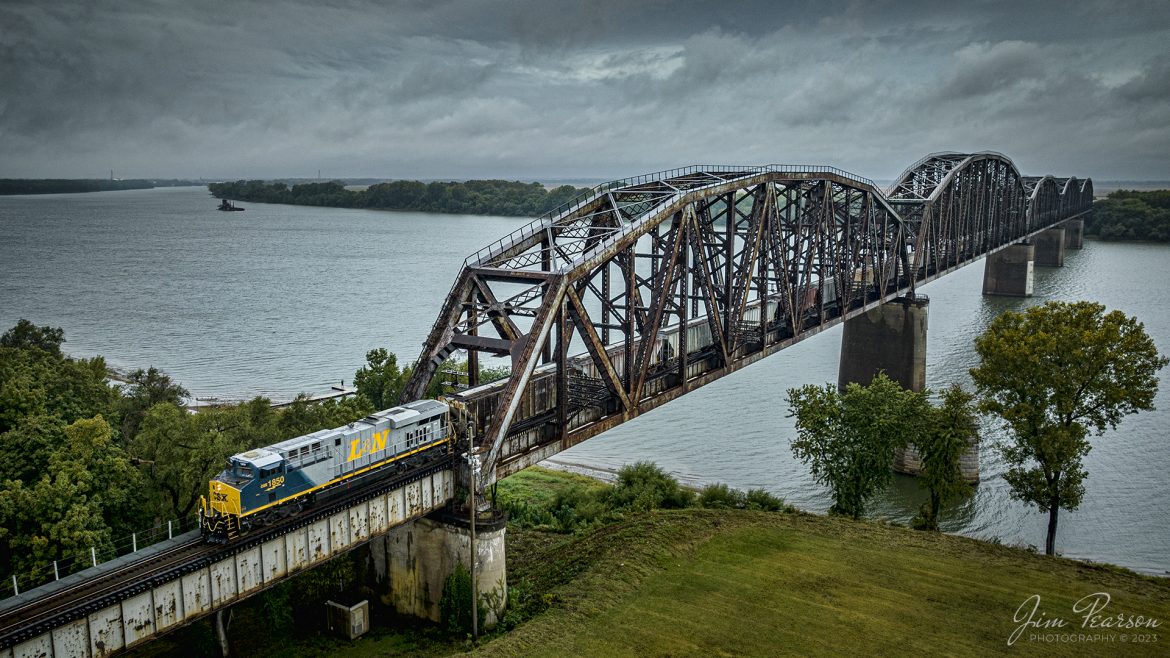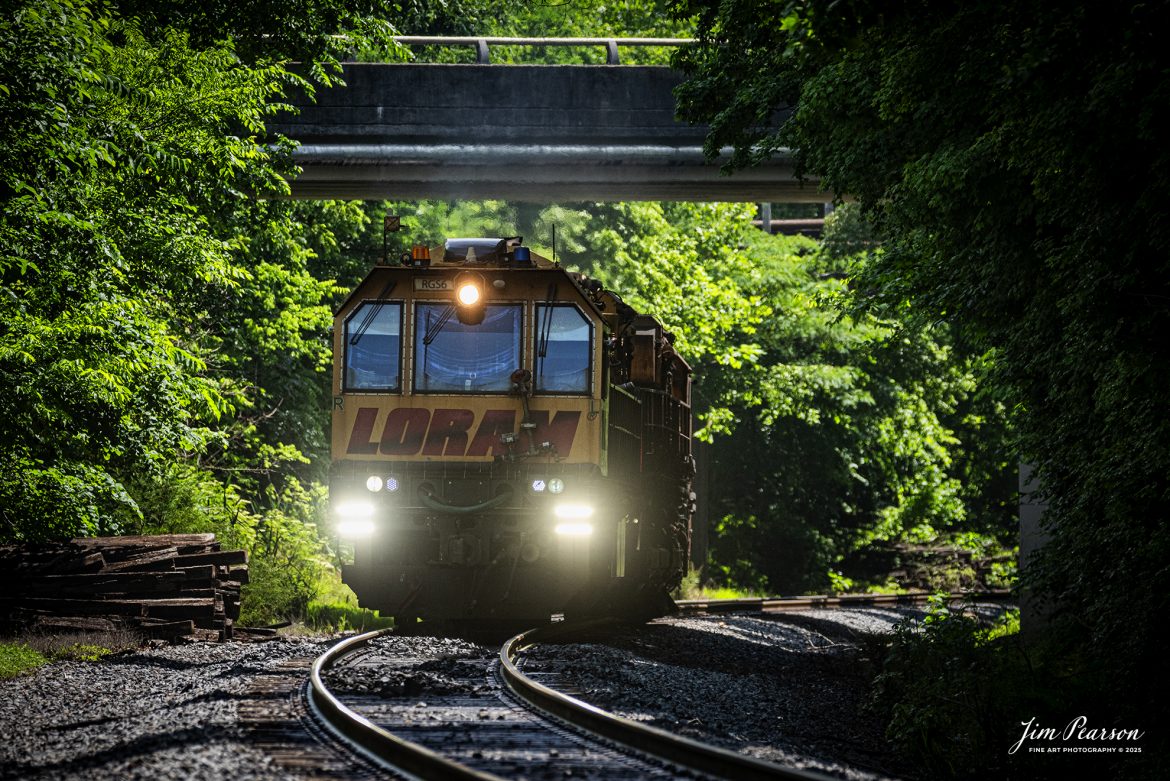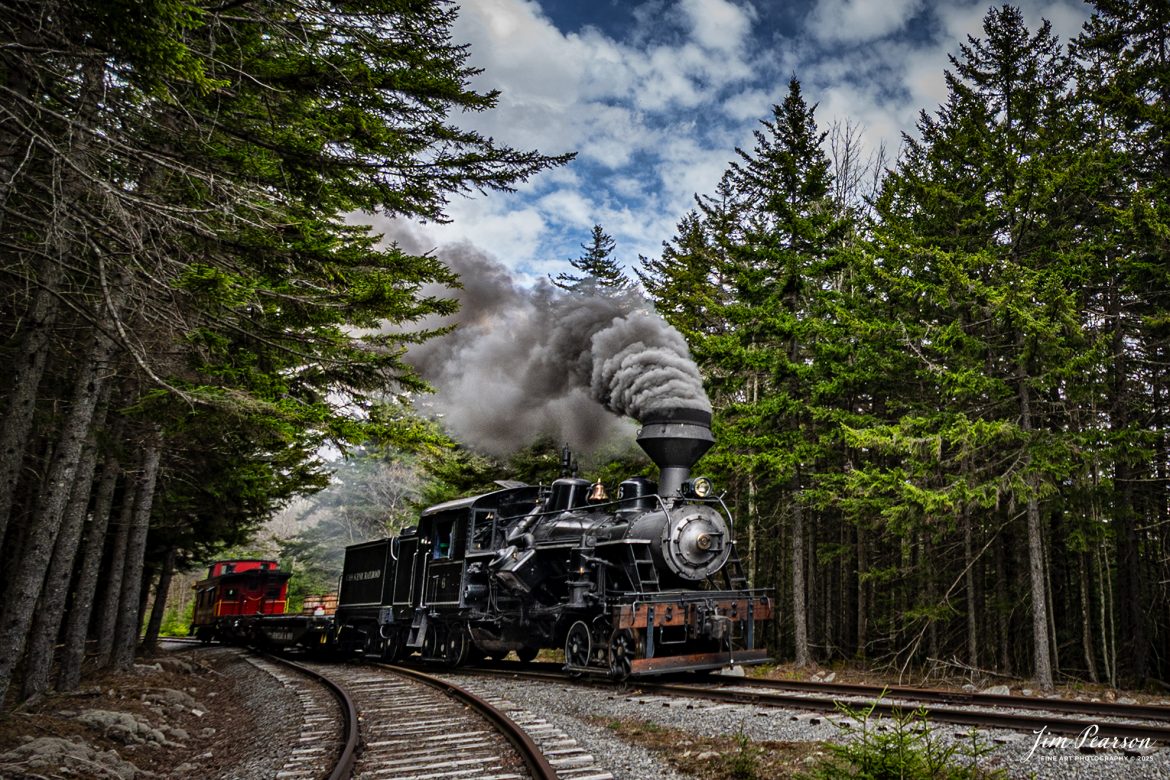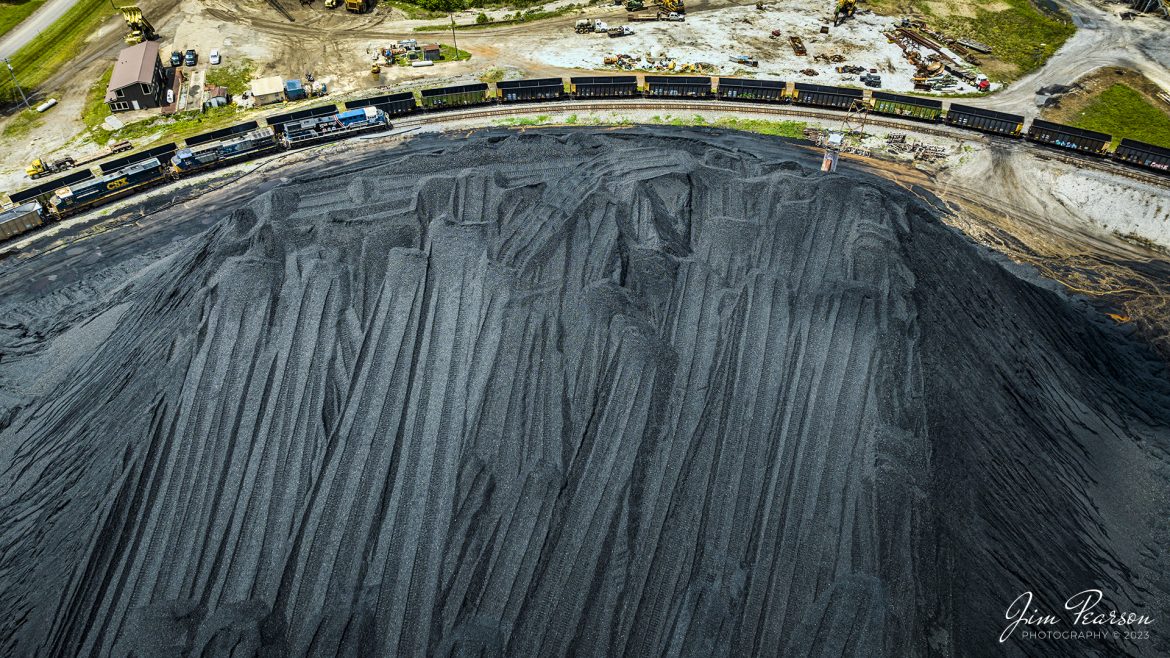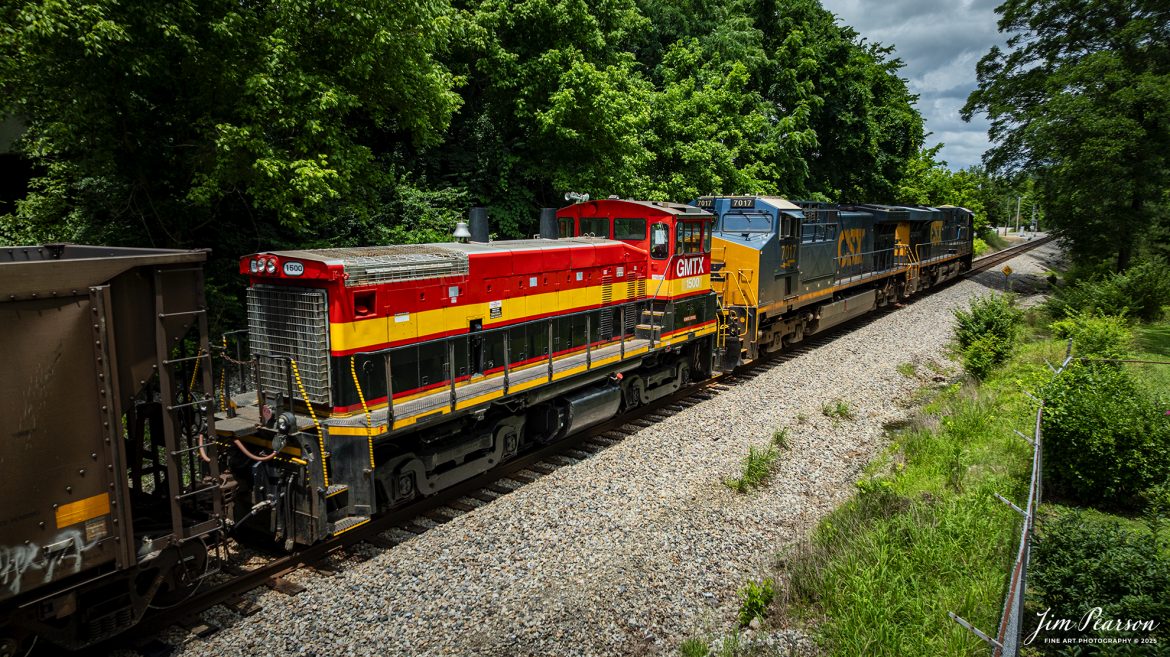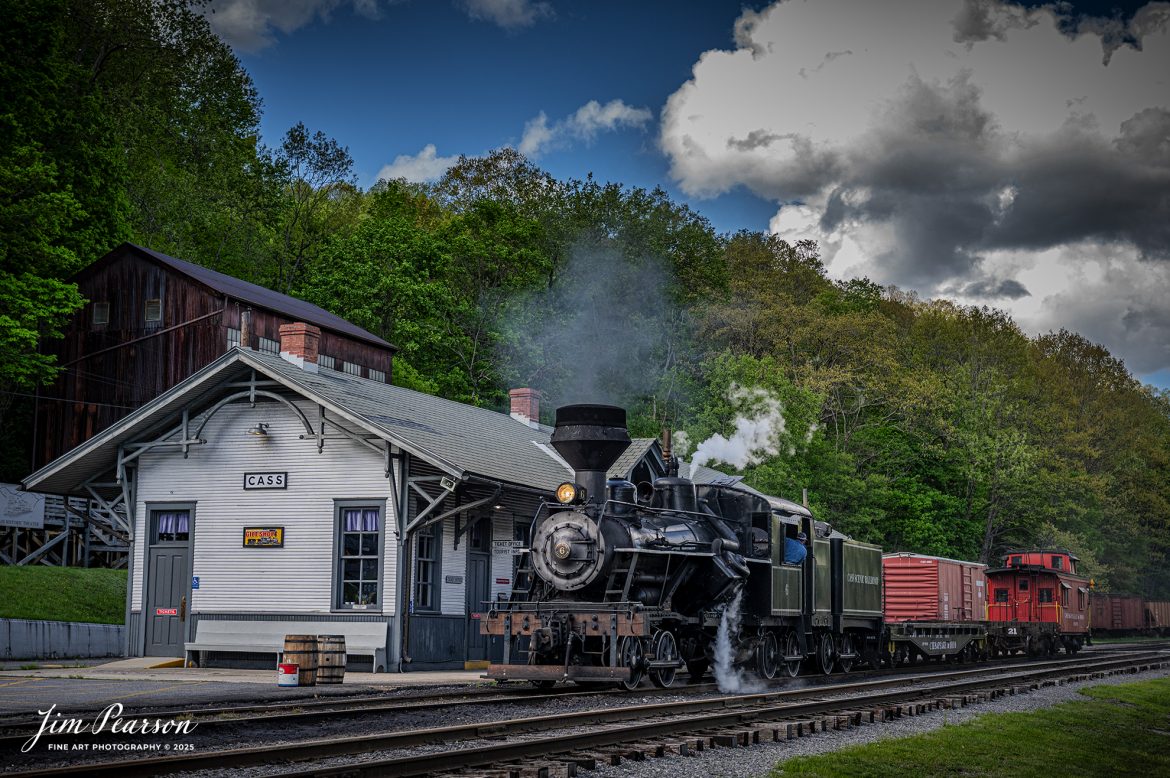May 12, 2022 – CSX P001-09 Presidential Office Car passenger train heads north over the Ohio river bridge from Henderson, Ky down the Viaduct into Evansville, Indiana on the Henderson Subdivision with CSXT 1, 2 and 3 leading the way.
CSX Transportation has repainted 3 of its executive fleet F40PH locomotives in a paint scheme inspired by predecessor Baltimore & Ohio and a fleet of cars to finish out the train set. The city of Baltimore chartered the railroad on Feb. 28, 1827, to build west to a suitable point on the Ohio River. Ground was broken on July 4, 1828, at Carrollton, Md. By 1929 the railroad operated 5,658 miles of track and had 2,364 locomotives. In the 1970s the B&O became part of Chessie System and in the 1980s it became part of CSX.
Tech Info: DJI Mavic Air 2S Drone, RAW, 22mm, f/2.8, 1/1500, ISO 110.

